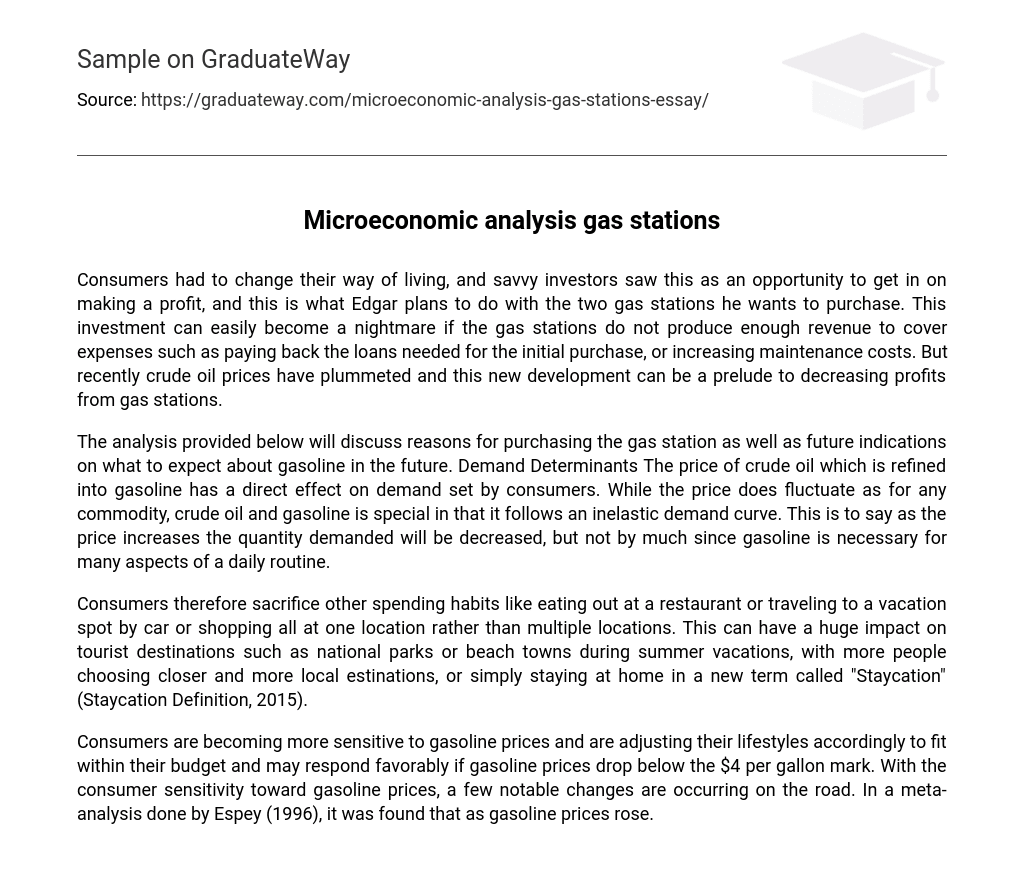Consumers have had to adapt their lifestyles, while clever investors view this as a chance to make money. Edgar intends to capitalize on this opportunity by acquiring two gas stations. However, if the gas stations fail to generate sufficient revenue for expenses like loan repayments and maintenance costs, this investment could become a nightmare. Moreover, the recent drop in crude oil prices may signal declining profits from gas stations.
The following analysis will examine the reasons for acquiring the gas station and provide future indicators regarding gasoline.
Demand Determinants: The price of crude oil, which is refined into gasoline, directly impacts consumer demand. Although the price fluctuates like any other commodity, crude oil and gasoline have an inelastic demand curve. This means that as the price increases, the quantity demanded will decrease, but not significantly due to gasoline being essential for various daily activities.
Consumers may choose to give up on other expenses such as dining out, traveling by car to vacation spots, or shopping at various locations in order to prioritize their spending. As a result, tourist destinations like national parks or beach towns may experience significant changes during the summer vacation season. More individuals are opting for destinations that are closer to their home or within their local region, or they may choose to stay at home altogether, a trend known as “Staycation” (Staycation Definition, 2015).
Consumers are responding to changes in gasoline prices by adjusting their lifestyles and may have a positive reaction if prices drop below $4 per gallon. This sensitivity to gasoline prices has led to noticeable changes on the road, as shown in a meta-analysis conducted by Espey (1996) where it was observed that as gasoline prices increased.





